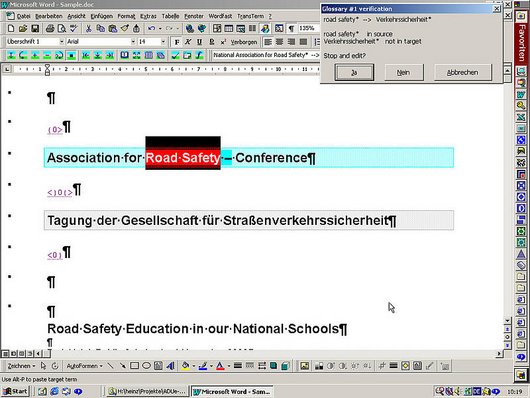Basic means of quality check like spell checkers are integrated into almost all TM systems.
Some systems use proprietary spell checkers configured as plug-ins to the editor; others simply make use of the spell check feature included in Microsoft Office products.
Other systems offer a function for checking the consistency of the terminology used in a translation. In this case, the system checks all terms in the source text against the contents of the term base. If a term is in the term base together with a target language equivalent but that equivalent has not been used in the translation, a warning appears in the editor.
Other Quality Check Features:
In TM systems which allow modification of tags during the translation process, quality check in the translation of tagged files means that the tags in the target text are compared with the tags in the original text by a series of tag verifiers.
Any changes in the tags are identified and the verifier checks the syntax of the changed tags. Only those modifications to tags are accepted by the verifier which do not violate the syntax of tags.
TM systems where the translation environment is furnished with project and workflow management features can help the translator or project manager keep track of the quality check measures specified for a given translation project.
Of course, not all of these quality check steps can be carried out by the software, but at least the software helps to define the steps which are considered necessary and to prevent the translator / project manager from declaring a project completed before all specified steps have been carried out.
It is worth noting that some translation memory applications (e.g. Trados Translator's Workbench) have an additional functionality called "cleaning", which is needed to remove hidden text and magenta codes before delivering the document or starting DTP.
After finishing a translation with this tool, the translator has a bilingual file, that is to say, a file containing both the source and target language segments – also called unclean file. This file must then be "cleaned" in order to leave only the translated text segments in the file. During the cleaning process it is possible to check the quality once again and if necessary make further changes in the translated text that can then be integrated into the translation memory.



